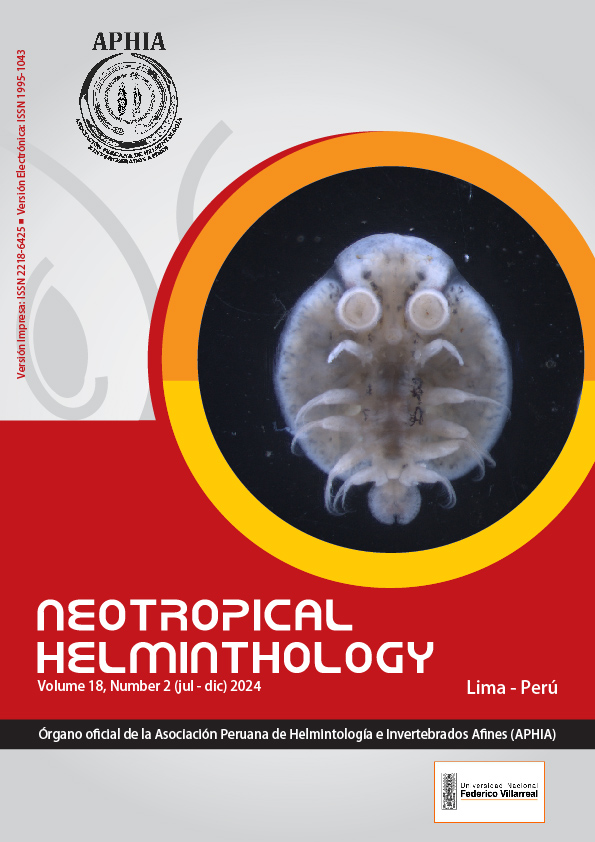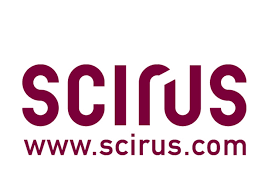Gastrointestinal parasitism by helminths and protozoa in wild birds rescued from trafficking in riverside communities on the são francisco river, sergipe, Brazil
DOI:
https://doi.org/10.62429/rnh20242181784Keywords:
helminths, protozoa, zoonosis, birdlifeAbstract
Illegal wildlife trafficking is a practice that represents a significant threat to biodiversity and public health in many regions of the world. Birds that are victims of trafficking are subjected to conditions of stress and confinement that favor the proliferation of parasites, compromising animal health and well-being. Furthermore, some of these parasites have zoonotic potential, posing an additional risk to human health. Therefore, this study aims to identify the gastrointestinal parasites present in wild birds originating from trafficking in the São Francisco River Basin region, providing important information about the risks to bird health and human health. Fecal samples were collected from wild birds (n=80) belonging to the orders Passeriformes, Columbiformes, and Psitaciformes. The samples were analyzed using two parasitological techniques: Mini – FLOTAC© and centrifugal-sedimentation with Ziehl-Neelsen staining, to identify the presence of gastrointestinal parasites. The results indicate a prevalence of helminths, such as Capillaria sp. (1.5%) and Trichostrongylidae (32.8%), and protozoa, such as Eimeria sp. (5%), Isospora sp. (53,7%), Cryptosporidium sp. (83.7) and Entamoeba sp. (44.8%). Furthermore, these parasites compromise animal health and well-being, causing clinical signs such as diarrhea, loss of appetite, weight loss, and death. In short, the identification of gastrointestinal parasites in wild birds rescued from trafficking in riverside communities is essential to understanding the risks to bird health and public health in the region.
Downloads
Published
How to Cite
Issue
Section
License

This work is licensed under a Creative Commons Attribution-NonCommercial-NoDerivatives 4.0 International License.
OBJETO: El AUTOR-CEDENTE transfiere de manera TOTAL Y SIN LIMITACIÓN alguna al CESIONARIO los derechos patrimoniales que le corresponden sobre la (s) obra(s) tituladas: xxxxxxxxxxxxxxxx, por el tiempo que establezca la ley internacional. En virtud de lo anterior, se entiende que el CESIONARIO adquiere el derecho de reproducción en todas sus modalidades, incluso para inclusión audiovisual; el derecho de transformación o adaptación, comunicación pública, traducción, distribución y, en general, cualquier tipo de explotación que de las obras se pueda realizar por cualquier medio conocido o por conocer en el territorio nacional o internacional.
REMUNERACIÓN: La cesión de los derechos patrimoniales de autor que mediante este contrato se hace será a título gratuito.
CONDICIONES Y LEGITIMIDAD DE LOS DERECHOS: El AUTOR-CEDENTE garantiza que es propietario integral de los derechos de explotación de la(s) obra(s) y en consecuencia garantiza que puede contratar y transferir los derechos aquí cedidos sin ningún tipo de limitación por no tener ningún tipo de gravamen, limitación o disposición. En todo caso, responderá por cualquier reclamo que en materia de derecho de autor se pueda presentar, exonerando de cualquier responsabilidad al CESIONARIO.
LICENCIA DE ACCESO ABIERTO: El AUTOR-CEDENTE autoriza que manuscrito publicado en La Revista Neotropical Helminthology permanece disponible para su consulta pública en el sitio web https://www.neotropicalhelminthology.com/ y en los diferentes sistemas de indexación y bases de datos en las que la revista tiene visibilidad, bajo la licencia Creative Commons, en la modalidad Reconocimiento-No comercial- Sin Trabajos derivados –aprobada en Perú, y por lo tanto son de acceso abierto. De ahí que los autores dan, sin derecho a retribución económica, a la Asociación Peruana de Helmintología e Invertebrados Afines (APHIA), los derechos de autor para la edición y reproducción a través de diferentes medios de difusión.


 Numero 2 Volumen 19 - 2025 (versión Anticipada)
Numero 2 Volumen 19 - 2025 (versión Anticipada)














































